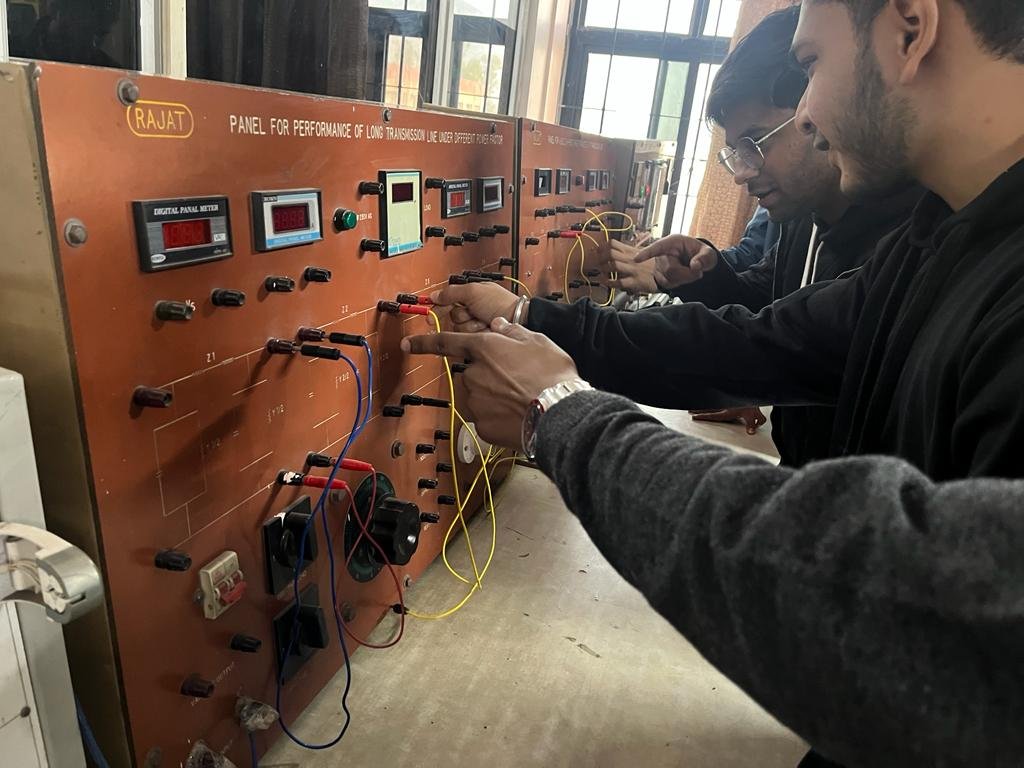Lab Room No: A307
Lab In charge: DR. SHASHI GANDHAR
Lab Attendant: Mr. Sachin
Lab Subjects: POWER SYSTEM I LAB (EEC‐260) AND POWER SYSTEM II (EEC‐351)

About Lab:
Power system lab comprises of protection, simulation, high voltage and machine related. Facilities are available for overcurrent, under voltage, directional, differential and distance relays including different numerical relays. Students can directly measure the characteristics of fundamental components used in electric power engineering and study the operation of electric power systems. In the lab experiments the instructor can teach students effectively about the real electric power systems: operation, technical limitation, and safety issues. The laboratory contains the hardware and software used by industry professionals in the creation and maintenance of power systems giving students the opportunity to develop the skills and experience that will aid them in the work field. The lab comes equipped with all the fundamental equipment needed for experiments involving electric power systems. The equipment available to students in the lab includes fundamental devices of electric power systems, such as transformers, electrical machines, power passive components, and power electronic converters.
Hardware Details: ABCD parameter for Transmission line kit, Ferranti effect for Transmission line kit, Long & Medium Transmission Kits, Earth Resistance Kits, Transformer Oil Kits, ETAP & MATLAB software, CTPT Kits, Single Line Ground Fault Kit, Differential Relay, Instantaneous over current relay kits, IDMT Kits, transformer protection using Differential Relay, Over temperature/ Overload relay and over current and earth fault protection kits
Software Details: MATLAB, ETAP
List of Experiment for Power System-I Lab
- Measurement of Inductance, Capacitance, Resistance and Insulation Resistance of multi-core cables.
- Study of different types of distribution systems by physical inspection of these systems.
- Study and calculation of ABCD parameters for a Transmission Line.
- Study of Ferranti Effect for Transmission Line.
- Study of different types of insulators with rating. Enumerate the different application of the different types of insulators, with their properties.
- Calculate the dielectric strength of the transformer oil.
- Estimation and Costing of over head lines/distribution lines of specified voltage level and length.
- Estimation and Costing of service mains for single face, three face domestic/industrial consumers. .
- MATLAB Simulation of Transmission Line for Short Transmission Line for calculation of various parameters.
- Explain why the guard ring is required for string insulators. Using MATLAB simulink calculate the potential distribution across different units of string insulator, with and without guard ring and also calculate the string efficiency.
- MATLAB Simulation of Transmission Line for Medium Transmission Line for calculation of various parameters
List of Experiments for Power System-II Lab:
- To study single line to Ground fault as practical application in transmission lines. (Using Experimental setup)
- To study three phase fault as practical application in transmission lines. (Using Experimental setup)
- To determine the characteristics of the given differential relay and to apply the relay for the protection of a transformer against internal faults. (Using Experimental setup)
- To study instantaneous over current relay. (Using Experimental setup)
- To study over voltage relay static type and draw its characteristics. (Using Experimental setup)
- To study the characteristics of miniature-circuit breaker. (Using Experimental setup)
- To study the operating characteristics of HRC fuse. (Using Experimental setup)
- To obtain the characteristics of thermal bimetallic relay. (Using Experimental setup)
- To study the characteristics of IDMT Earth fault relay. (Using Experimental setup)
- Simulation based on Load flow analysis.
- Simulation based on Short circuit analysis.
- Simulation based on Transient stability study.
- Simulation based on Relay co-ordination.

